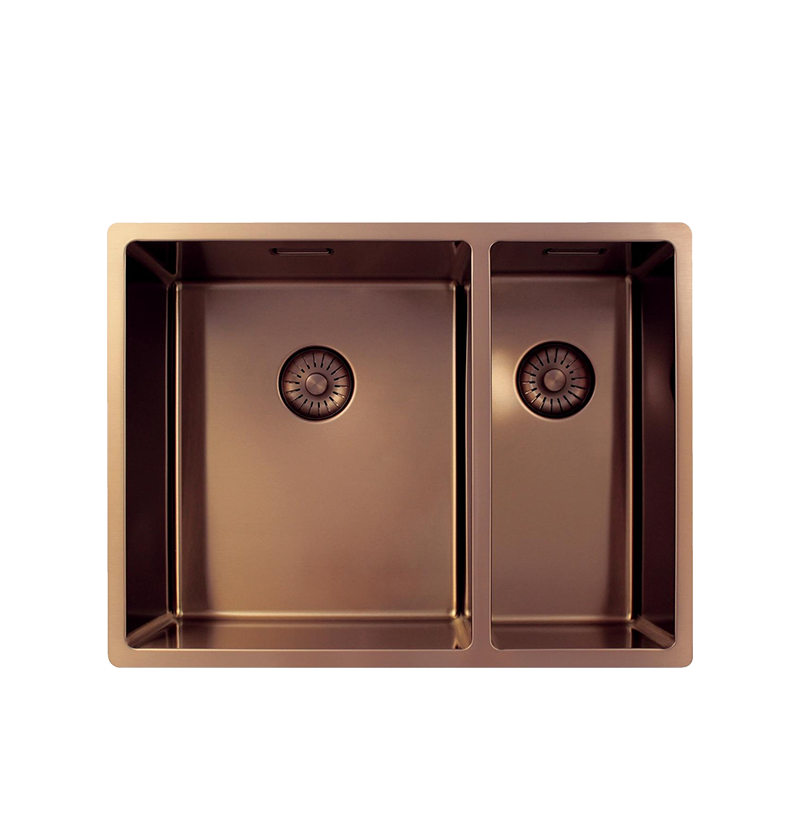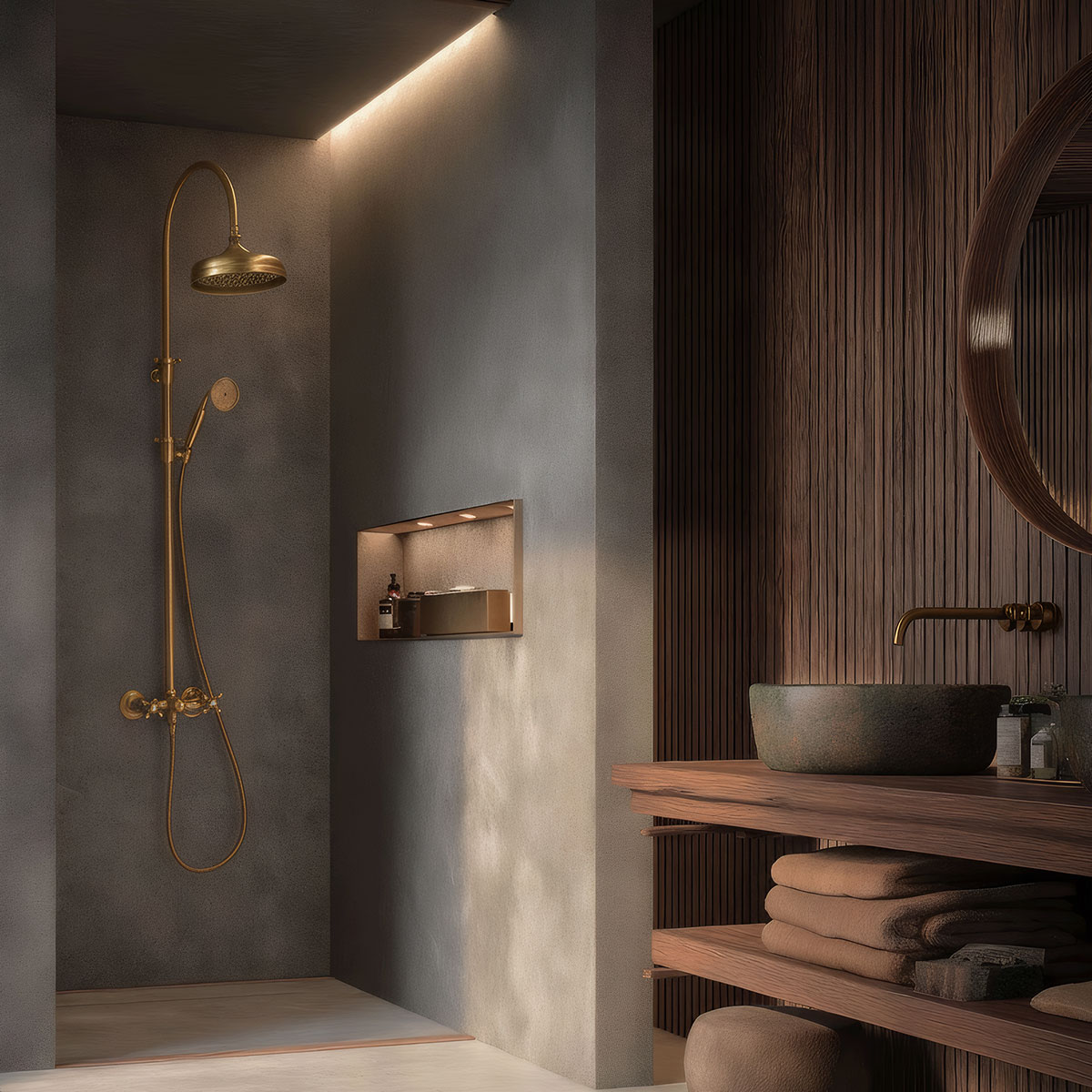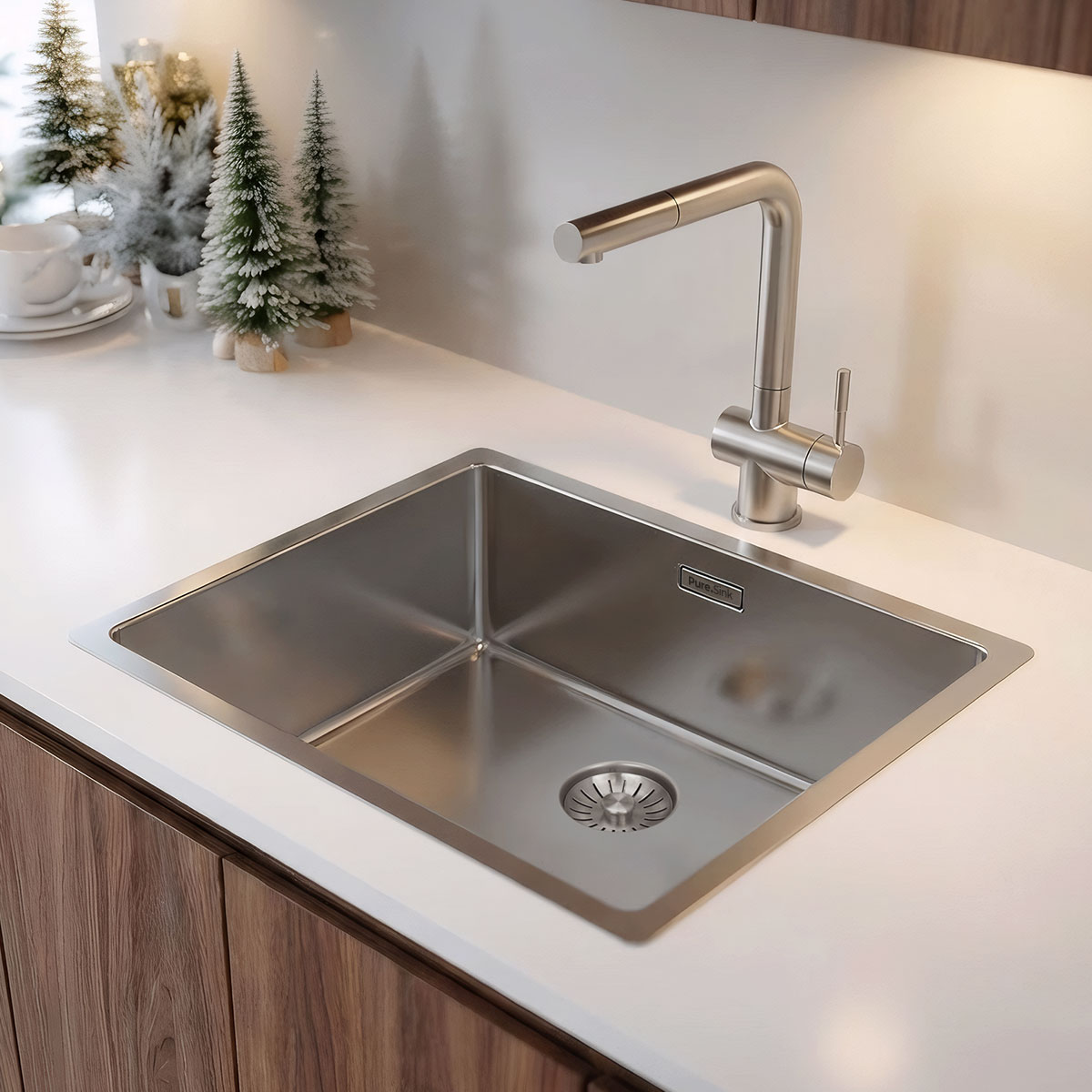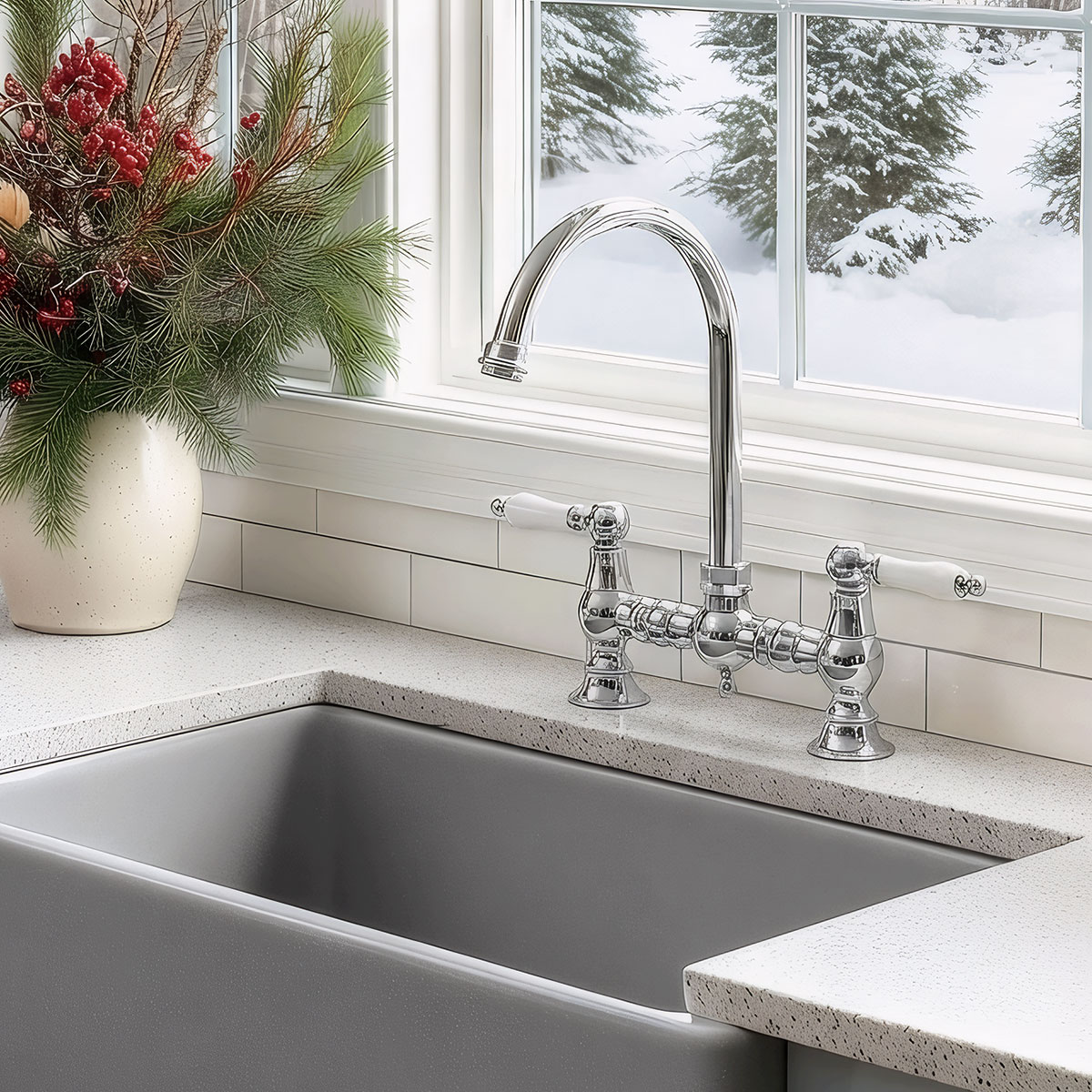Set the Mood: Lighting Ideas for a Cozy Christmas Kitchen
The kitchen at Christmas has a certain enchantment.Light flickers softly against the metallic edges of your favorite cookware, music hums softly in the background, and the air is filled with the aroma of citrus and cinnamon.It's where discussions start, giggles linger, and every get-together seems to return to the kitchen, to light, to warmth.The appropriate lighting this season defines your festive atmosphere in addition to providing illumination. It has the power to transform a light-filled, practical office into a warm, golden sanctuary that feels both sophisticated and vibrant.
Festive Bathroom Style: Add Luxury with Gold & Bronze Taps
Interiors in the winter have a rhythm of their own. Homes start to glow from within as the light softens and the air slows. During the holiday season, warmth, introspection, and attention to detail are where one finds luxury rather than abundance.The bathroom, which is frequently disregarded when holiday styling, is one of the most exquisite ways to add that subtle luxury into your house. The entire ambiance can be changed with the correct fixtures, especially those with gold and bronze finishes. They turn a utilitarian area into a calm haven that is both festive and classic.These metals don't demand attention. Even minimalist bathrooms are given a sense of serene grandeur by their glow, which captures the gentle winter light and balances the chilly stone and tile tones.
Which Sink Brands Offer the Best Value for Modern Homes in 2026?
The kitchen is evolving into a multifunctional, integrated living space, no longer just a utilitarian zone. According to industry insights, the sink today is more than “just plumbing”; it has become a key design element that can either elevate or disrupt an interior. The central wet zone is now specified around eleven core themes, including seamless design, whole-home continuity, health and wellness, and material sophistication.From Functionality to Unity: The Seamless Kitchen MandateKitchens are gaining influence even as average home sizes shrink, with 76% of professionals expecting kitchen space to increase over the next three years. Fixtures should be experienced as integrated furniture rather than commercial hardware, since kitchens and living areas are increasingly merging.Here, “Silent Luxury” takes the lead: simple forms, low edges, hidden storage, and visually serene, uncluttered surfaces. Clean geometry, minimal transitions, and carefully placed components (sink, faucet, drain, and dispenser) are essential to avoid visual noise in the wet zone.The New Material Languages: Organic Textures & Saturated ColorsNatural, tactile kitchen elements—such as wood, stone, and even micro-gardens—are being driven by wellness trends. Saturated colors like earthy greens, navy blue, chestnut, and plum often anchor monochrome schemes, while warm neutrals (beige, sand, mushroom, clay, taupe) are replacing stark whites. In minimalist spaces, finishes like matte black and midnight blue add depth.PVD coatings (Physical Vapor Deposition) on stainless steel are crucial for realizing these palettes in the wet zone without sacrificing durability. For a high-use area that must remain pristine, PVD layers enhance scratch resistance, colorfastness, and anti-fingerprint performance, binding rich tones (matte black, brushed gold, bronze, champagne) to high-grade 304 stainless steel.Integrated Functionality: The Sink as a Multifunctional HubModern kitchens must do more with less visual clutter. Workstation sinks offer deep single bowls for vertical stacking, rear-positioned drains that free cabinet space (for waste bins or water filters), and an ecosystem of accessories that maximize functionality without adding mess—think roll-up racks, cutting boards, colanders, and protective grids. Stainless steel apron fronts deliver professional-grade durability in a stylish, low-maintenance finish.
Golden Accents in the Kitchen – Adding Stylish Warmth for the Holiday Season
December is the perfect time to bring extra sparkle into your home. And where better to start than the kitchen, the beating heart of the house? Golden and brass accents are the trend for those who want to combine luxury with coziness. They don’t just add warmth and character, but they also lift the atmosphere to a festive level.































